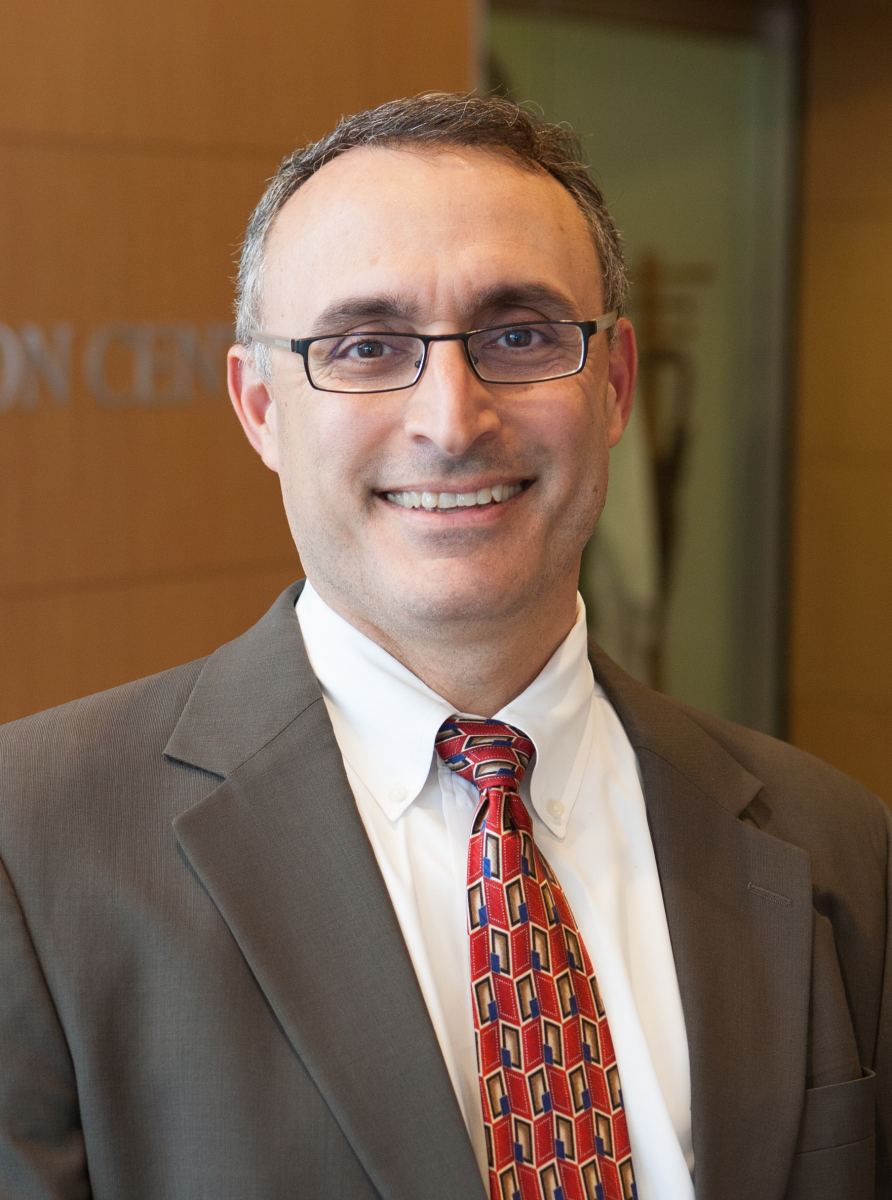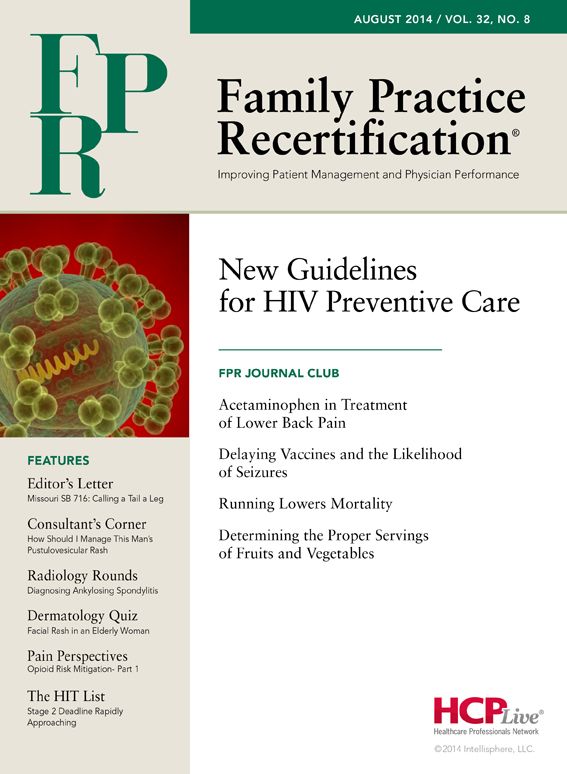Publication
Article
Family Practice Recertification
Delaying Vaccines and the Likelihood of Seizures
Author(s):
This is a cohort study of over 300,000 children from 2004 through 2008 to determine the relationship between childhood vaccinations and the occurrence of seizures in the first two years of life. This population study came from across the US and was evaluated by the Centers for Disease Control and Prevention in collaboration with a variety of managed care organizations.

Frank J. Domino, MD
Review
“Delaying Vaccines Leads to Seizures[AH1] .” Pediatrics 2014; 133:e1492.
This is a cohort study of over 300,000 children from 2004 through 2008 to determine the relationship between childhood vaccinations and the occurrence of seizures in the first two years of life. This population study came from across the US and was evaluated by the Centers for Disease Control and Prevention (CDC) in collaboration with a variety of managed care organizations.
PopulationStudy Methods
In this study, children aged 2 to 24 months of age were evaluated. Tracking was done for ICD-9 coding for emergency room visits or hospitalization for seizure as well as date from birth and vaccination. Excluded were children receiving vaccines who were older than 24 months, children who developed seizures before 38 days of life, those diagnosed with newborn seizure disorder, or children with a history of chronic seizure disorders. The baseline rate of seizures in this population was about 2% of children in the first 2 years of life.
Results and Outcomes
There was no association between the timing of infant vaccination and post-vaccination seizures in the first year of life. In the second year of life, the incident rate ratio (IRR) for seizures after the first measles/mumps/rubella (MMR) vaccine dose at the recommended time of 12-15 months was 2.65. The IRR of seizure when the first MMR dose was given at 16-23 months was 6.53. When the MMR vaccine was combined with the varicella vaccine (MMRV) the incident relative risk for seizures after the first MMRV at 12-15 months was 4.95 and at 16-23 months was 9.8.
Conclusion
Delaying vaccinations in the 2nd year of life, especially the MMR or the MMRV vaccine to after 15 months dramatically increases the risk of seizures in the first two years of life.
Commentary
_____________________________________________________________
This paper provides reassurance for physicians and parents regarding immunization in the first year of life. While it does not discuss any of the other side-effects of vaccination in the first year, like fever or pain at injection site, it is reassuring to note the variety and multitude of vaccines given in this time period do not increase the risk of seizures.
In the second year of life this is less so. The lowest risk of vaccine related seizures is by offering MMR vaccine between the months of 12 and 15 months of life. Parents who wish to diverge from this schedule, often as a result of misinformation and confusion must be made aware that their decision carries a risk.
Delaying the MMR until after 15 months can triple the risk of having a seizure. When the MMR was combined with the varicella vaccine, the risk increased almost by a factor of 5.
Like clean water, car seat belts, car airbags, and bicycle helmets, vaccines lower morbidity and mortality. There are very few indications to delay vaccines from the standardized schedule offered by the CDC. These include true and severe egg allergy and severe illness, but vaccines should not be delayed due mild URI symptoms and certainly should not be delayed because of misinformation by the parent.
Encourage parents to receive vaccinations on time and reassure them that doing so is in their child’s best interest. Delaying them for reasons of myth and misinformation is a dangerous option. When providing an informed consent discussion, stress the dangers of this potential delay and the many life saving benefits of vaccinations.
About the Author
Frank J. Domino, MD, is Professor and Pre-Doctoral Education Director for the Department of Family Medicine and Community Health at the University of Massachusetts Medical School in Worcester, MA. Domino is Editor-in-Chief of the 5-Minute Clinical Consult series (Lippincott Williams & Wilkins).
Additionally, he is Co-Author and Editor of the Epocrates LAB database, and author and editor to the MedPearls smartphone app. He presents nationally for the American Academy of Family Medicine and serves as the Family Physician Representative to the Harvard Medical School’s Continuing Education Committee.




